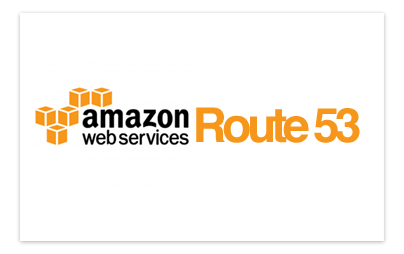
Amazon Route 53
Amazon Route 53 is a highly available and scalable cloud Domain Name System (DNS) web service.
About Product
Description
Amazon Route 53 effectively connects user requests to infrastructure running in AWS – such as Amazon EC2 instances, Elastic Load Balancing load balancers, or Amazon S3 buckets – and can also be used to route users to infrastructure outside of AWS. You can use Amazon Route 53 to configure DNS health checks to route traffic to healthy endpoints or to independently monitor the health of your application and its endpoints. Amazon Route 53 Traffic Flow makes it easy for you to manage traffic globally through a variety of routing types, including Latency Based Routing, Geo DNS, Geoproximity, and Weighted Round Robin—all of which can be combined with DNS Failover in order to enable a variety of low-latency, fault-tolerant architectures. Using Amazon Route 53 Traffic Flow’s simple visual editor, you can easily manage how your end-users are routed to your application’s endpoints—whether in a single AWS region or distributed around the globe. Amazon Route 53 also offers Domain Name Registration – you can purchase and manage domain names such as example.com and Amazon Route 53 will automatically configure DNS settings for your domains.
Amazon Route 53 Functionality
Amazon Route 53 has a simple web-services interface that lets you get started in minutes. Your DNS records are organized into “hosted zones” that you configure with Route 53’s API. To use Route 53, you simply:
Subscribe to the service by clicking on the sign-up button on this page.
Create a hosted zone that can store DNS records for your domain. Upon creating the hosted zone, you receive four Route 53 name servers across four different Top-Level Domains (TLDs) to help ensure a high level of availability. If you don’t have a domain name, you can search for available domains and register them using the Route 53 console. If you have an existing domain name, you can opt to have it transferred to Route 53’s management so that you can conveniently manage your domain names and DNS configuration in a single location.
Your hosted zone will be initially populated with a basic set of DNS records, including four virtual name servers that will answer queries for your domain. You can add, delete or change records in this set using the AWS Management Console or by calling the ChangeResourceRecordSet API. A list of supported DNS records is available here.
If you want to keep your domain name with the current registrar, inform the registrar to update the name servers for your domain to the ones associated with your hosted zone. If you’ve registered a domain name with Route 53, your domain name will be automatically associated with the correct name servers.
To transfer your domain from another DNS service to Route 53, you:
Get a list of your DNS record data for your domain name, generally available in the form of a “zone file” that you can get from your existing DNS provider.
Follow the four getting started steps listed above.
By following these few simple steps, you’ll be able to set up your DNS entries and have Route 53 answering queries for your web application in just a few minutes. See our Technical Documentation for more detailed information about the Route 53 service and APIs.